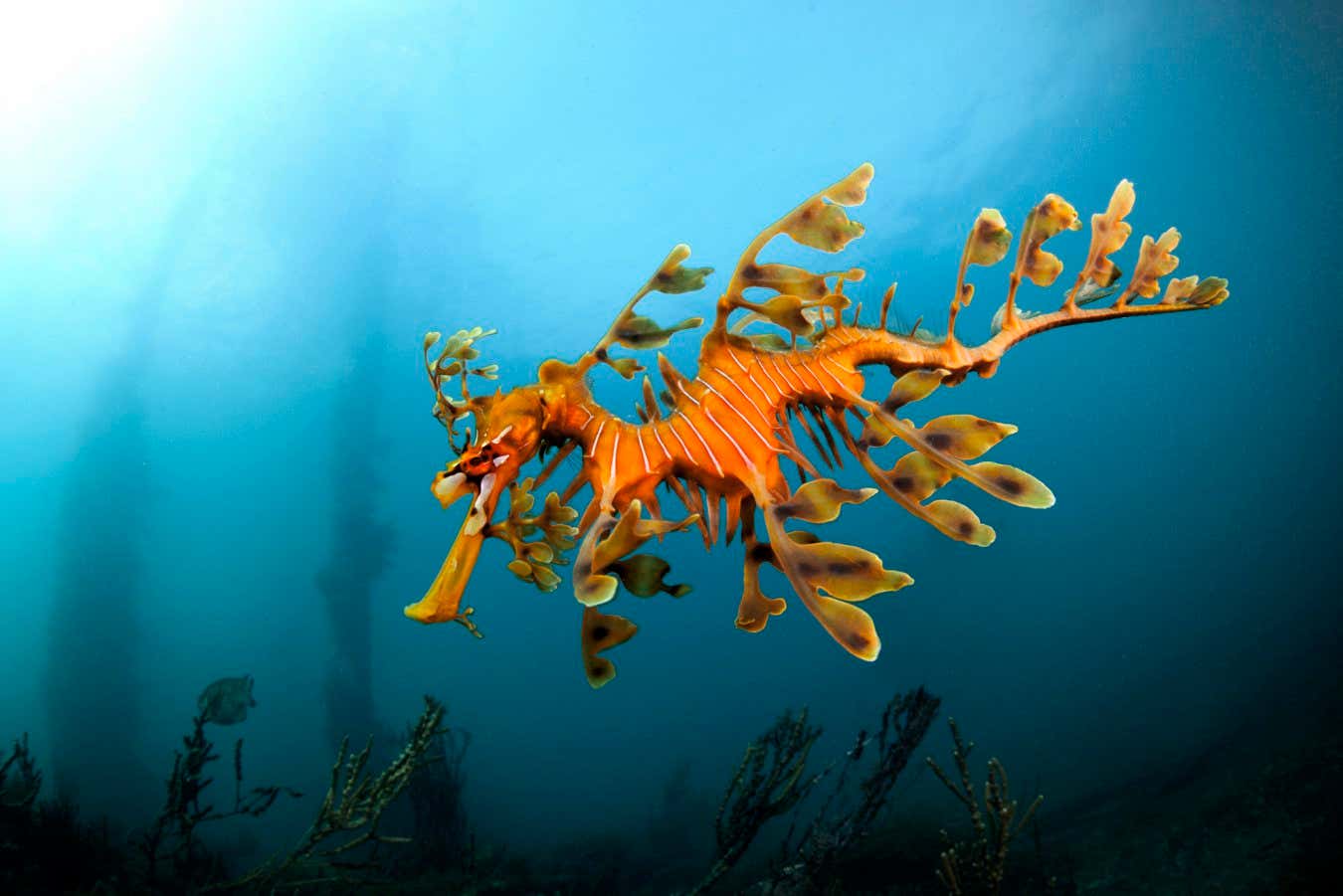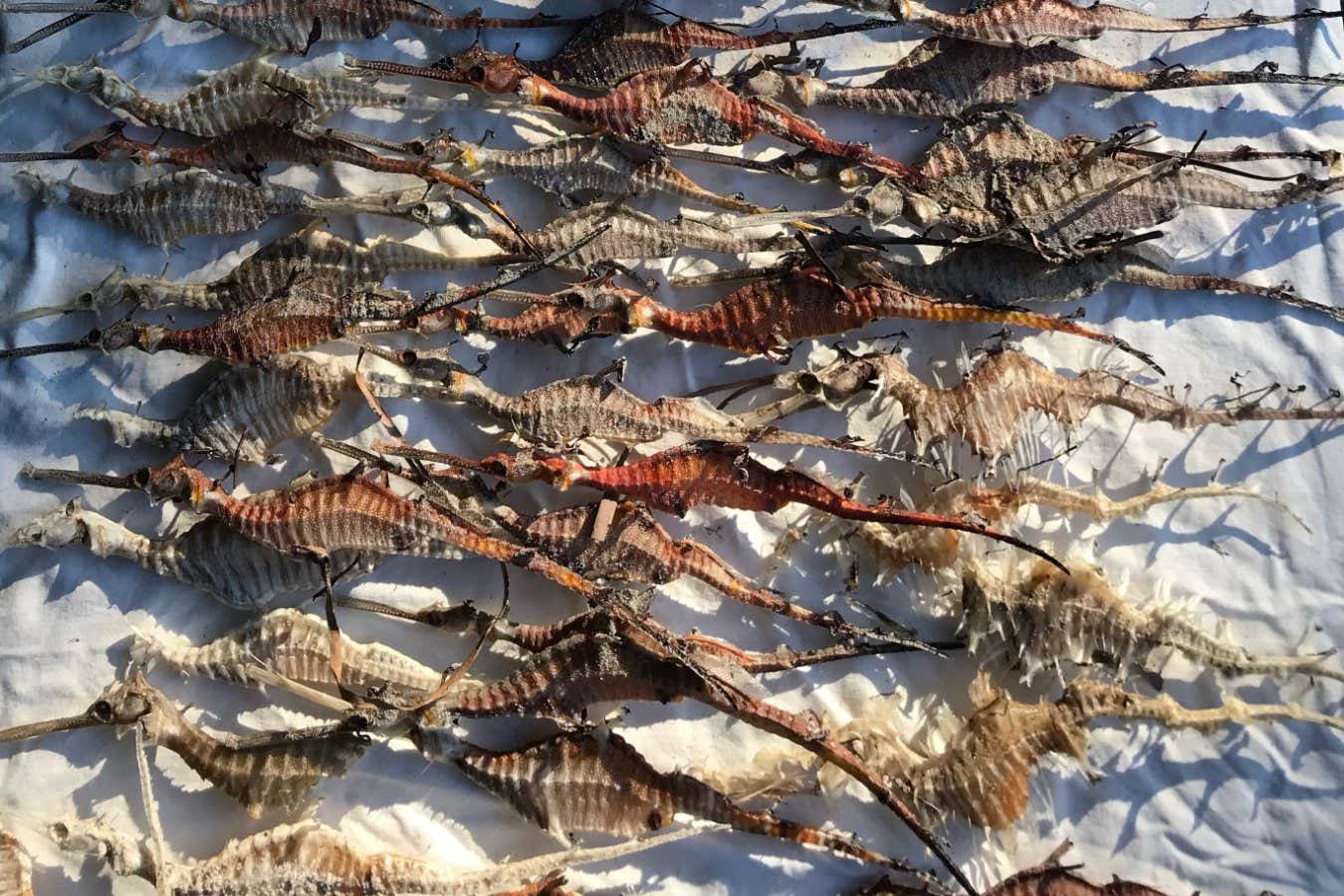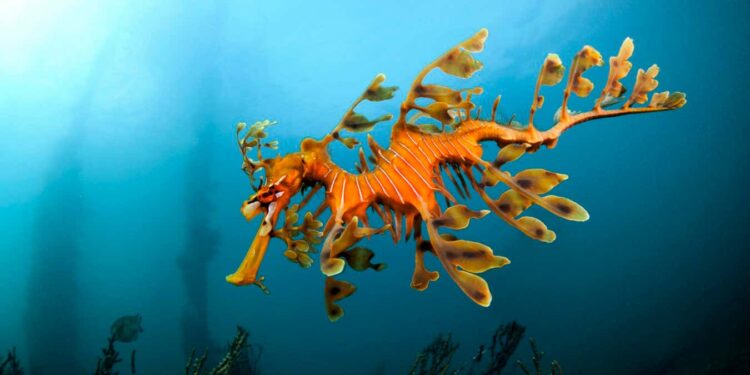
Leafy seadragons rely on camouflage to avoid predation
Alastair Pollock Photography/Getty Images
One of the world’s most extraordinary fish could be in danger of extinction due to a massive bloom of toxic algae engulfing parts of the southern coast of Australia.
Leafy seadragons (Phycodurus eques) are in the same group of fish that includes seahorses and pipefish. They are covered in leaf-shaped protrusions that allow them to blend in perfectly amid forests of seaweed.
Now they and their relative, the common weedy seadragon (Phyllopteryx taeniolatus), are being found dead in their thousands along hundreds of kilometres of the South Australian coast.
It has already been a tough few years for the animals, with enormous storms driven by the La Niña weather system resulting in the deaths of hundreds of weedy seadragons in April 2022 in Sydney alone.
Then, beginning in March this year, a massive algal bloom of the species Karenia mikimotoi broke out in Gulf St Vincent near Adelaide, South Australia. This has resulted in mass deaths of fish and other marine life, with dolphins, sea lions and even great white sharks washing up on beaches.
Surfers and swimmers have been made ill and multiple oyster harvesting areas have been closed for months. There are fears the algal bloom could continue to spread in both directions along the south of the continent.
The South Australian government says the cause of the bloom was a marine heatwave that began in September 2024, during which temperatures rose to 2.5°C above average and remained elevated in spite of the arrival of winter. Floods of the Murray river in 2022 and 2023 flushed extra nutrients into Gulf St Vincent near Adelaide, and these combined with an unprecedented upwelling of nutrient-rich water in 2023 and 2024 to worsen the situation.
State and federal governments have this week allocated AUS$28 million to tackle the unfolding catastrophe.
Janine Baker, an independent marine ecologist who is leading a citizen science effort to understand the scale of the disaster, says several thousand seadragons have died since the bloom began, with a greater number being leafy seadragons.
Although there are no toxicology results from seadragon carcass testing, the wash-ups coincide with the locations of harmful algal blooms, says Baker. “Seadragons have small gill pores, openings on the sides of their heads, that can easily be clogged with algae, and also, they cannot rapidly swim away from dense aggregations of bloom cells,” she says.

Dead seadragons washed up on Yorke peninsula near Adelaide, Australia, in May
Lochie Cameron
With so many adult seadragons killed, the pool of those able to reproduce in the late 2025 to early 2026 breeding season will be reduced. “This has implications not only in the loss of annually breeding adult animals of both species, which can continue to produce for around a decade, but includes the loss of the next generations of seadragons,” says Baker. “Thousands of young will therefore not be born in late 2025 to early 2026 in heavily bloom-impacted regions.”
David Booth at the University of Technology, Sydney, says the threat of extinction from the current event is unclear at present. “But the sheer magnitude of wash-ups over a key part of the seadragon range is of great concern.”
Weedy seadragons were recently listed as vulnerable due to population declines in Tasmania. “Now, with the South Australian event and suspected losses in [New South Wales], I fear issues with the species, but we won’t know until proper surveys are done on key dragon diver locations post-bloom,” says Booth.
Christopher Keneally at the University of Adelaide says the combination of toxic foam on beaches, algal aerosols making surfers and swimmers sick, and dead sea life washed up on beaches makes it “very obvious what we’re dealing with in terms of environmental catastrophes”. As climate change continues and sea surface temperatures increase further, we can expect to see more environmental crises like this, he says.
Many of the algal cells in the current bloom could settle into sediments ready for conditions to worsen again. “Next summer, we could see a continuation or a resurgence of this bloom,” says Keneally.
Topics:
Source link : https://www.newscientist.com/article/2489722-thousands-of-seadragons-are-dying-in-australias-toxic-algal-bloom/?utm_campaign=RSS%7CNSNS&utm_source=NSNS&utm_medium=RSS&utm_content=home
Author :
Publish date : 2025-07-24 15:00:00
Copyright for syndicated content belongs to the linked Source.









